Geometrical interpretation of zeros of quadratic polynomials:
A polynomial of degree 2 is called a quadratic polynomial. For any quadratic polynomial , ,
has one of the two shapes either open upwards like U or open downwards like , ∩ depending on whether a > 0 or a < 0. (These curves are called parabolas.)
The zeroes of a quadratic polynomial ,
are precisely the x-coordinates of the points where the parabola representing
intersects the x-axis.
Now the following three cases can happen.
Case-(i) The graph cuts x-axis at two distinct points. (See fig 1.)
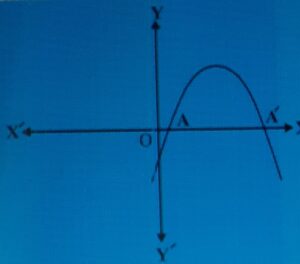 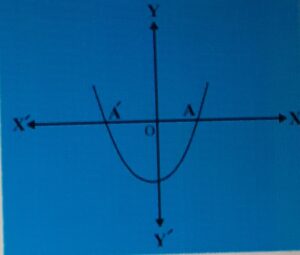 |
|
| Fig. 1 |
In this case , we get two distinct solutions of y.
Case(ii) The graph cuts the x-axis at exactly one point (see fig.2)
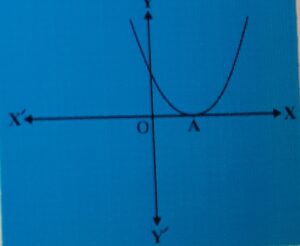
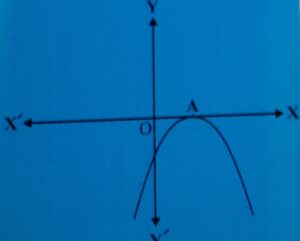
fig.(2)
The x-coordinate of A is the only zero for the quadratic polynomial in this case.
Case(iii) The graph is either completely above the x-axis or completely below the x-axis. (see Fig. 3).
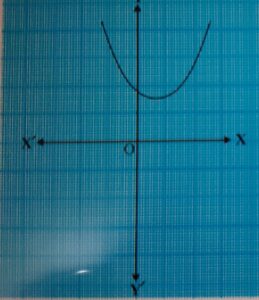
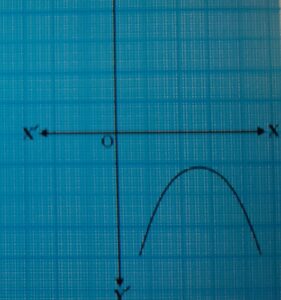
fig(3)
So, the quadratic polynomial has no zero in this case.
Thus we see geometrically that a quadratic polynomial can have either two distinct zeroes or two equal zeroes (i.e., one zero), or no zero. This also means that a polynomial of degree 2 has atmost two zeroes.
